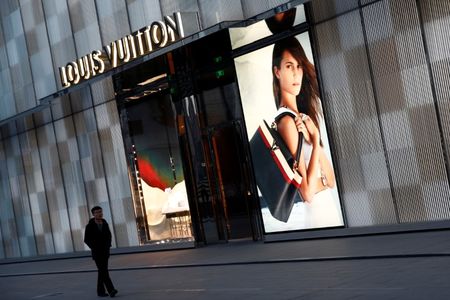

Inversting.com — The luxurious sector is presently dealing with a collection of key debates amongst traders, formed by the sector’s efficiency, client conduct, and macroeconomic components.
As per analysts at Morgan Stanley, a number of main themes have emerged that outline these investor debates, centered round demand developments, pricing methods, regional market dynamics, and operational challenges.
An enormous portion of the luxurious sector’s development over the previous 20 years has been pushed by Chinese language customers.
In 2019, Chinese language nationals accounted for roughly 33% of gross sales throughout main luxurious manufacturers, making this market a key focus for traders.
Nevertheless, because the pandemic, the demand from Chinese language customers has softened, each domestically and overseas. For example, within the first half of 2024, LVMH noticed deceleration in demand from Chinese language customers, with development within the Vogue and Leather-based Items (F&LG) division dropping from 9% within the first quarter to six% within the second quarter.
This decline has raised questions on whether or not there’s a structural shift in Chinese language demand. Some traders argue that the unfavourable wealth impact and demographic challenges in China, equivalent to an growing old inhabitants, might result in a protracted discount in spending energy.
Others preserve that when financial circumstances enhance, Chinese language customers may return to their earlier ranges of spending, spurred by a excessive financial savings price and rising demand for social standing via luxurious items.
One other key debate facilities on the pricing technique of luxurious manufacturers, which has pushed the middle-income client out of the market. With costs for leather-based items and entry-level merchandise rising, luxurious corporations threat alienating the aspirational buyer section that had been a big driver of development.
In consequence, some traders worry that the luxurious sector’s market will shrink to serve solely the ultra-wealthy, whereas others imagine that manufacturers will adapt by introducing extra entry-level merchandise to recapture the aspirational client.
Nevertheless, with pricing combine anticipated to show unfavourable this yr, luxurious corporations may face challenges balancing quantity and pricing methods to take care of development.
In the USA, there was an uncommon decoupling between family wealth and luxurious spending. Traditionally, luxurious spending tracked carefully with the rise in family wealth, significantly in relation to inventory market efficiency.
Nevertheless, regardless of U.S. family web value rising to five.7 instances GDP within the first quarter (nearly a file excessive), luxurious spending has not recovered as anticipated.
Bulls count on that spending by U.S. customers will ultimately rebound as wealth results kick in, however bears argue that luxurious spending within the U.S. is unlikely to get better swiftly.
The core subject is that a lot of the wealth improve is concentrated amongst Child Boomers and older generations, whereas youthful customers, who’re key to the luxurious market, have seen much less of this wealth development.
Following the pandemic, the luxurious sector skilled a growth, with topline development averaging 11.5% CAGR from 2019 to 2023, almost double the historic price.
This has led traders to debate whether or not the sector is now coming into a “digestion section” that would final one to a few years. This section is characterised by slower development as customers reduce after making vital luxurious purchases post-pandemic.
Some traders imagine that the sector will expertise solely a short-term slowdown earlier than returning to its development trajectory, whereas others argue that the market may take as much as three years to completely soak up the surplus demand generated through the pandemic.
The luxurious sector noticed a notable growth in margins through the post-pandemic restoration. Firms like Hermès and LVMH noticed their working margins rise sharply, pushed by sturdy gross sales development.
Nevertheless, with development slowing and working bills rising attributable to inflation and elevated hiring, traders are involved about potential margin compression.
With many traders questioning the sustainability of development within the luxurious sector, there’s widespread concern about potential derating. Traditionally, luxurious manufacturers have traded at excessive multiples attributable to their constant development and model momentum.
Nevertheless, with development projections moderating to low-single-digit percentages, there’s stress on valuation multiples to replicate this extra subdued outlook.